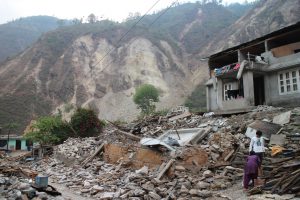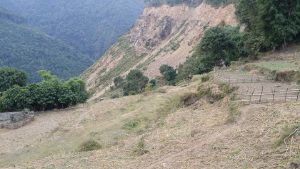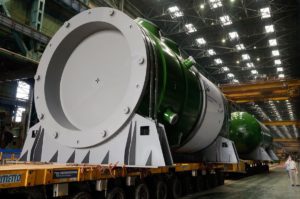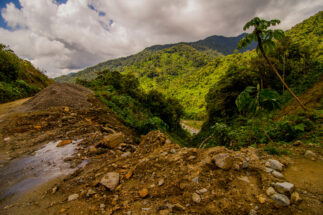New research has warned that tigers, Asiatic wild dogs and other apex predators in southern Nepal will be “severely affected” if the construction of a new road is completed.
The Postal Highway and its link roads are planned to extend over 1,700 kilometres, spanning the breadth of the country along the Indian border. So far, less than a fifth of the work is completed, with the remaining sections still under construction across the Terai, the country’s lowlands.
But as the study, published in Nature in February, highlights, the planned highway will cross the distribution area of seven apex predators, and will be entirely built within the range of the dhole, or Asiatic wild dog. Along with the sloth bear and tiger, the dhole is among the species already most at risk due to existing roads, and will be severely impacted by the new project.
Apex predators are non-herbivorous terrestrial mammals that have an average body mass higher than 13kg, or species that are below that threshold but are the main predators in their ecosystems, as defined by the recent study in Nature.
Across Nepal, at least 5,000km of highways are under construction, and work has also begun on the 1,000-kilometre East-West Railway. If built, these infrastructure projects will pass through the habitats of several endangered species, from tigers in the country’s lowlands to snow leopards in its mountainous regions.
Though they promise increased connectivity and development, the projects are encountering difficulties balancing human and social concerns with environmental and wildlife conservation, and have proven divisive between communities, conservationists and authorities.
“Our road construction is ‘demand-based’ instead of ‘need-based’,” said Roshan Sherchan, a Nepali conservationist advocating for wildlife-friendly infrastructure in the country. “Communities may demand [these projects], but the state should weigh in on both economic and ecological benefits, before making decisions to construct infrastructure and build roads wherever is necessary. But it’s very ad hoc now.”
Road controversies in Nepal are nothing new
The concept of a new cross-country road had been mooted for several decades in Nepal before construction finally began on the Postal Highway in 2008. But progress since has been mostly paralysed by financial troubles, delays, disagreements and, latterly, the Covid-19 pandemic. To date, just under 300km of road has been completed, according to the Nature study.
In 2017, construction of a section of the highway was delayed after UNESCO raised serious concerns about plans for the route to cut through Chitwan National Park – the oldest national park in the country, which has been listed as World Heritage Site since 1984. An initial environmental examination (IEE) for this section of the project had been carried out by the Department of Roads and approved by the national planning commission in 2009, but this was deemed insufficient by park authorities and UNESCO.
The state should weigh in on both economic and ecological benefits, before making decisions to construct infrastructure and build roadsRoshan Sherchan, conservationist
A report on the situation, submitted by the national parks department to UNESCO in April 2021, said that the IEE had made “no mention” of the road passing through the park, but “during the construction phase seven kilometres of the road section… was known to fall within the buffer zone”. The buffer zone was established in 1996 to provide access to resources for communities while protecting the core area of the park from degradation.
After a public interest lawsuit was filed against the government, in 2019 the Supreme Court of Nepal ordered construction of the section of road to be halted, and plans for a railway line through the national park also to be stopped. The court ruled that no construction should take place without a full environmental impact assessment, agreed in consultation with the park’s stakeholders.
Though construction hasn’t resumed in Chitwan National Park, work continues elsewhere, including in important bands of forest known as “biological corridors”, which link national parks in Nepal with adjoining parks along the border with India.
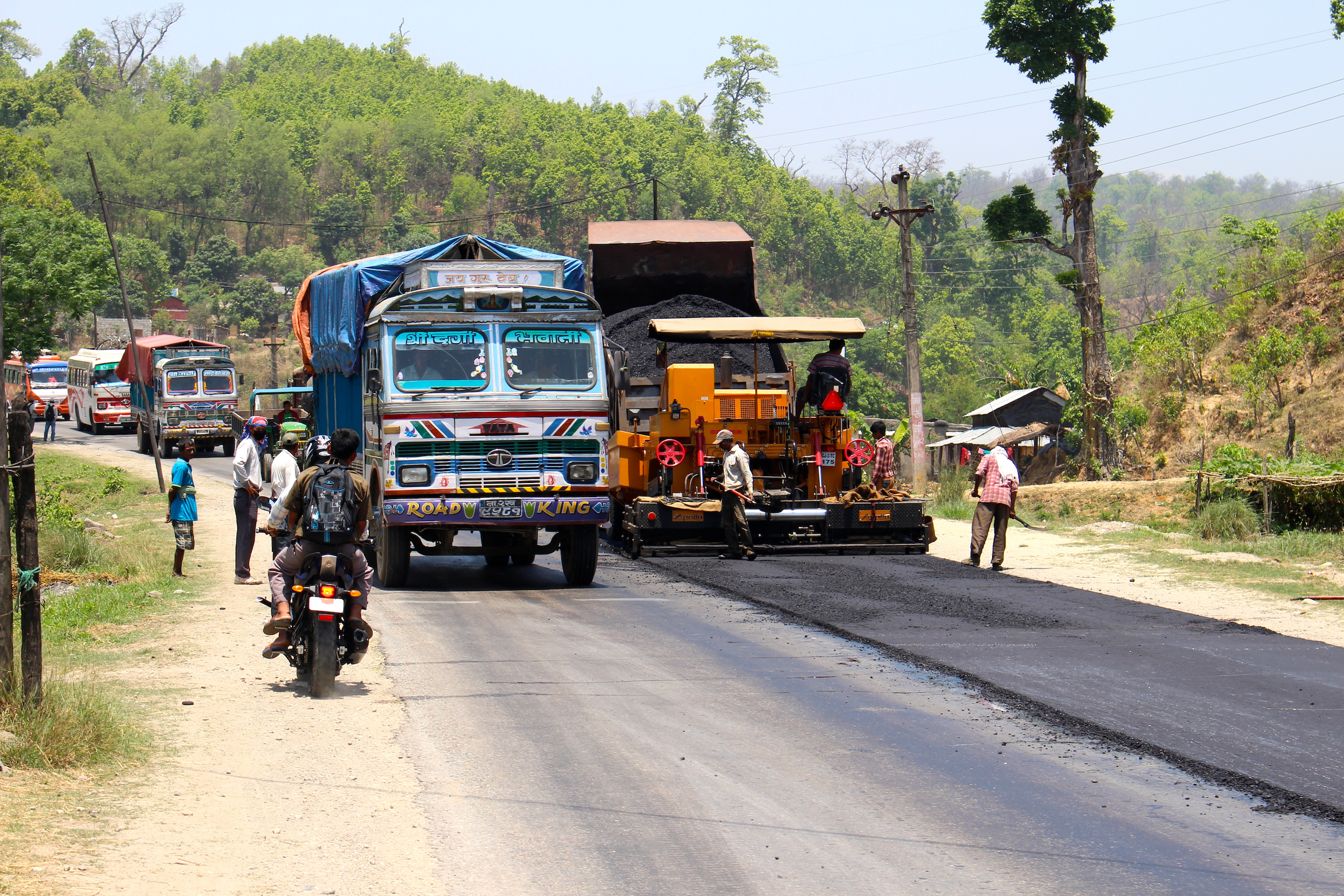
The recent research in Nature, which was carried out in Africa, the Brazilian Amazon and Nepal, highlighted the threat that roads can pose to wildlife and these habitat-connecting corridors. It estimated that over 25 million km of new roads will be constructed globally by 2050, with around 90% in developing countries, including Nepal.
“Roads threaten apex predators acutely due to their large spatial ranges, low population densities, low reproductive rates and intolerance to increased human disturbance,” said Bibek Raj Shrestha, an ecologist and one of the authors of the study.
Eight of the 10 species of apex predators most exposed to roads are found in Asia: the sloth bear, tiger, dhole, Asiatic black bear, clouded leopard, sun bear, Sunda clouded leopard and leopard. As Nepal is home to seven of these vulnerable species, close attention and collaborative approaches to road-building will be essential to manage controversies and minimise impacts as work unfolds, the authors conclude: “It is vital that road planning committees include conservation scientists, the voices of all stakeholders – from local communities to government officials – and even wildlife protection organisations.”
Tiger waits for lockdown to cross highway
Other recent investigations in Nepal have also highlighted the impact of roads on apex predators. On 14 February 2021, a tiger was radio-collared in Halkhoriya, Bara district, in southern Nepal’s Parsa National Park. After a couple of weeks, the tiger had travelled over 10km south and reached a major road, the East-West (or Mahendra) Highway – but didn’t cross it. Instead, it moved west, roaming along the highway for over 20km.
One-fifth
of total unnatural wildlife deaths in Nepal’s national parks in 2020 were due to road accidents
“Though the tiger reached the highway over five times in three months, it didn’t dare to cross the country’s busiest road,” said Baburam Lamichhane, a senior officer at the National Trust for Nature Conservation’s office in Chitwan National Park, who was involved in the tracking of the animal.
On 20 May, the tiger walked south to the highway again and, for the first time in three months, took a chance on crossing the road. This happened after three weeks of lockdown, imposed by the government at the end of April. “It clearly shows that the tiger had attempted to cross earlier, but decided to cross during the lockdown as vehicular movement was negligible,” added Lamichhane, who is also an expert on tigers.
In the past five years, at least three tigers have been killed due to collisions with vehicles on the East-West Highway – which runs largely parallel to the Postal Highway route, around 25 km to the north. On 23 January this year, a rhino died after falling in a trench on a newly built roadside in the vicinity of Chitwan National Park, while seven leopards were killed in accidents involving vehicles in 2017 alone. And it’s not only roads that pose a threat: irrigation canals have become death traps for wild animals. In 2016, nine animals drowned in canals that are part of the Sikta irrigation project in western Nepal.
According to the Department of National Parks and Wildlife Conservation, 108 animals were killed in road accidents in 2020 within national parks – nearly one-fifth of total unnatural wildlife deaths that year. The numbers were even higher in the preceding years, with 119 in 2019, 126 in 2018 and 131 in 2017.
“These numbers are just those from inside the national park that have been reported. It would have been much higher if all deaths were recorded properly – forget about the rest of the country,” said Pramod Neupane, a wildlife infrastructure expert who previously worked with the World Wildlife Fund in Nepal.
Wildlife-friendly guidelines in progress
Better protection for wildlife may be on the way. After four years in preparation, the Nepal government has approved its first ever guidelines for wildlife-friendly infrastructure, aimed at curbing the threats and problems encountered.
Roads, railways, canals and other types of infrastructure can be designed to enable the movement of wild animals and reduce negative impacts on populations. Examples include structures that allow the passage of wildlife, fencing that enables animals to cross where it is safe, wildlife escape measures and signage to alter motorists to wildlife, according to Development Asia.
An underpass might be the area beneath a large bridge or viaduct, or a section of a drainage pipe set aside for small mammals and reptiles. Some species prefer overpasses, or bridges, although these historically have been more expensive to build than underpasses.
“The cabinet meeting on 10 March has endorsed the guideline and criteria document, but we are yet to receive a copy,” said Meghnath Kaphley, spokesperson at the Ministry of Forests and Environment.
The document is not yet publicly available, but a draft of the guidelines seen by The Third Pole instructs: “The contractor or a concerned agency should prepare the design of wildlife friendly infrastructures, while preparing detailed project report of any infrastructure and submit it for approval before moving into construction phase.”
The guidelines have also set criteria defining “wildlife-friendly” infrastructure. For example, they stipulate that underpasses and overpasses “built for the movement of rhinos and elephants should be of 20 degrees slope at maximum and minimum breadth of 20 metres. For other animals, it could be up to 30 degrees in slope and 10 metres wide at minimum.” The document also specifies measures such as creating tree canopy bridges for animals such as monkeys and squirrels, so that they are able to move from one tree to another and cross obstructions such as roads and railways.
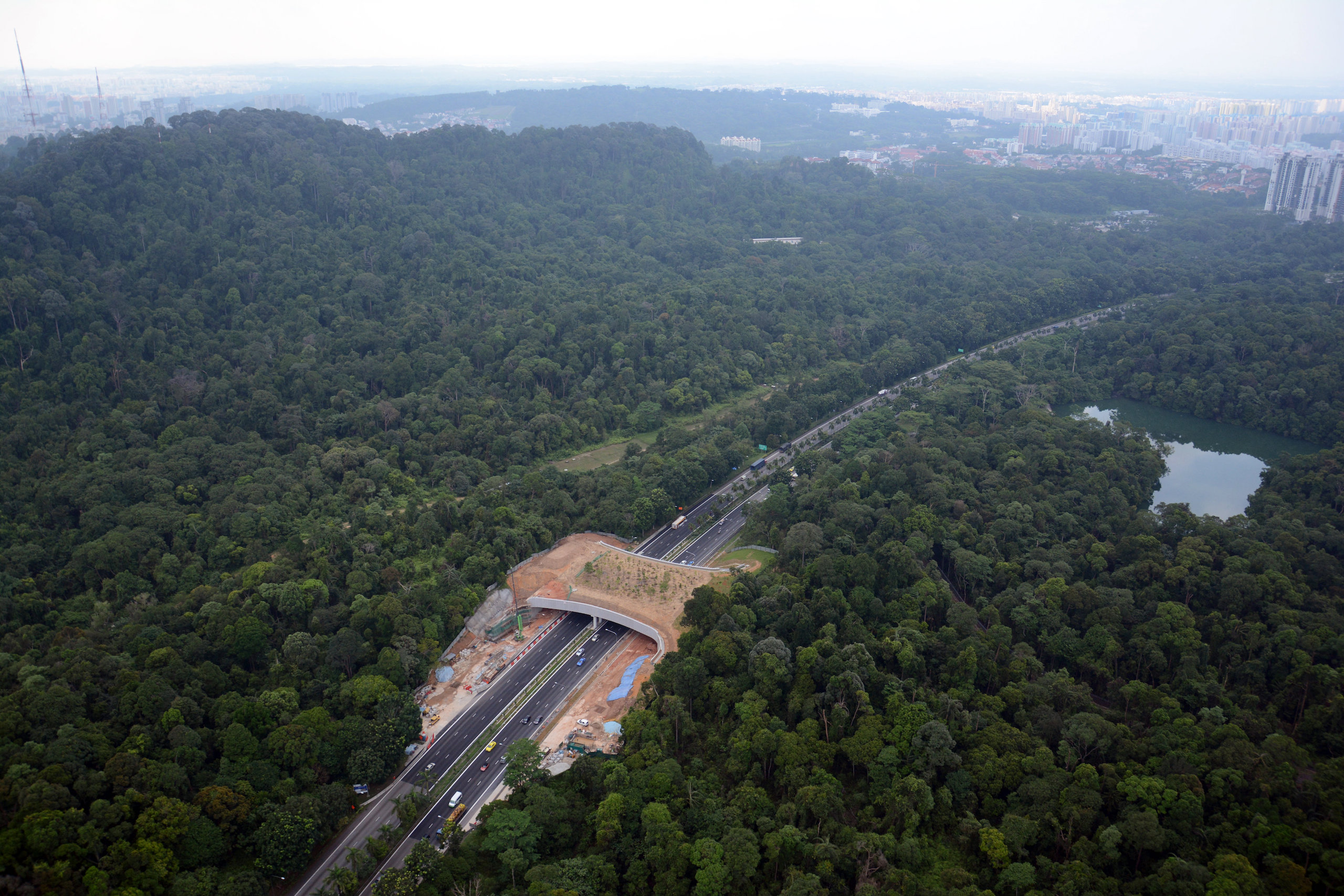
In 2016, more than four decades after the establishment of its first national park, Nepal constructed its first ever underpass, enabling wildlife to cross a road safely. However, at the time there were no guidelines or criteria for this type of infrastructure. There are currently four such wildlife passes around Chitwan National Park. A study of animal movement though these passes showed a significant use of them. Camera traps set by WWF detected 607 animal crossings between August 2017 and June 2018. Of these, 93% were wild mammals and birds, while the remaining 7% were domestic cattle, according to a report on the initiative.
Krishna Prasad Nepal, deputy director-general at the Department of Water Resources and Irrigation, is hopeful that the new guidelines will help to reduce conflicts and concerns, as stakeholders had been struggling without a clear document outlining appropriate design.
“In Ranijamara irrigation project in western Nepal, we had a plan to level up a wildlife passage with the adjoining land, but later wildlife experts suggested that it doesn’t have to be flat, as elephants can move up and down in gentle slopes, but are reluctant to walk on concrete structures,” he said. “Instead of investing money to increase height we covered the slope with a soil cushion about one metre thick. Elephants have been walking easily now. This document would have been helpful to work on the project from its inception phase,” he added.
Experts have said guidelines are good, but that the country’s narrow concept of infrastructure –for humans only – needs a larger rethink. “Engineers would design longer roads but shorter bridges due to costs. But in wildlife areas, we should construct bridges as long as possible, so that wild animals can use the riverbanks as corridors,” said Pramod Neupane. “Costs need be allocated for other species too, as roads have been connecting people, but disconnecting the rest.”
However, officials are hopeful that the guidelines will help reduce wildlife casualties and support the country’s sustainable development plans, as they can help to embed consideration of wildlife during the project design stage. “To begin with, it would be bit difficult due to higher costs, and discourage investors and donors, but if implemented it will ensure our common future,” said the environment ministry’s Kaphley. “It should be taken as responsibility rather than burden.”
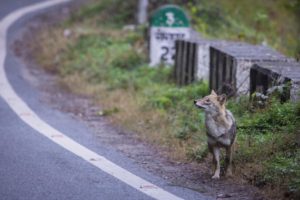

![vehicles stranded due to a landslide atop a road being widened under the Char Dham Project [Image by Hemant Dhyani]](https://dialogue.earth/content/uploads/2020/08/CDP-Landslide-Hemant-Dhyani-300x201.jpg)

